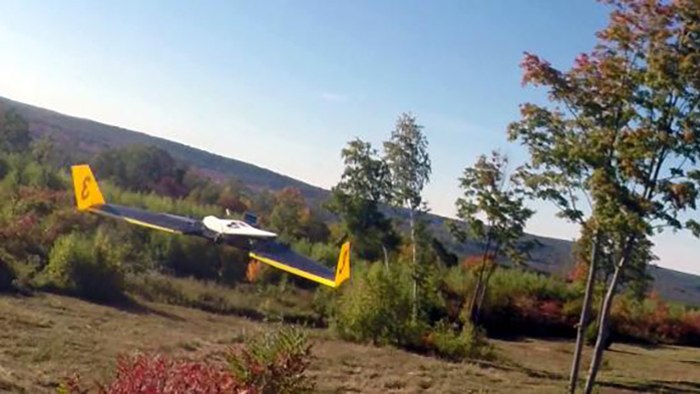There are plenty of stories about drone crashes out there, as the unmanned aerial vehicles are known to easily smash into things. But now thanks to researchers at MIT’s Computer Science and Artificial Lab (CSAIL), drones may soon be much better at not being grounded by obstacles.
CSAIL Ph.D. student Andrew Barry developed a drone with an obstacle detection system and set it loose in a field filled with trees, where it impressively made automatic adjustments to avoid crashing into trunks and limbs as it cruised up to 30 MPH.

Andrew Barry designed his algorithms to take readings every 10 meters. Image source: MIT/CSAIL.
Current approaches to obstacle avoidance systems for drones involve onboard cameras and processors to snap images in order to analyze the surroundings of regular intervals every couple of meters. Because this requires lots of processing power, the drones struggle to move faster than five or six MPH without specialized hardware. Barry decided there needed to be a counterintuitive approach to speed things up.
According to Barry, when a drone is moving at faster speeds, the environment doesn’t change all that much between frames. So he designed his algorithms to take readings every 10 meters instead.
“You don’t have to know about anything that’s closer or further than that,” Barry said. “As you fly, you push that 10-meter horizon forward, and, as long as your first 10 meters are clear, you can build a full map of the world around you.”
Barry and his team put this technique to the test working with a $1,700 drone built with off-the-shelf components and a camera on each wing, along with a pair of processors you might find in a mobile phone.
CSAIL has said that the system runs 20 times faster than existing software, extracting depth information at a rate of 120 frames per second. Currently the team is looking to develop the software further so it could work at more than one depth, and in denser surroundings.
“As hardware advances allow for more complex computation, we will be able to search at multiple depths and therefore check and correct our estimates,” said Barry. “This lets us make our algorithms more aggressive, even in environments with larger numbers of obstacles.”
Source: Gizmag
Advertisement
Learn more about Electronic Products Magazine





